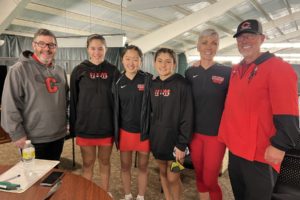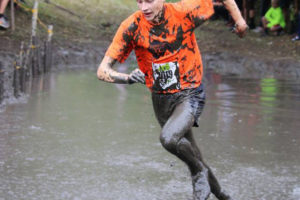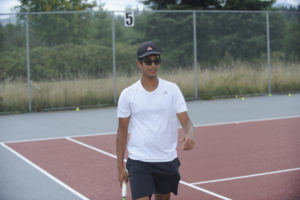When the Camas High School girls tennis team won the 2024 4A state championship, they did so despite having had nearly half of their practices canceled due to rainy weather.
“It’s a shame for the girls. The way our region participates (in tennis), the boys are a lot less impacted by weather,” Camas School District Athletic Director Stephen Baranowski said, explaining that, because the boys tennis team starts its season in August while the girls team begins in March, the girls often have to cope with a high number of rained-out practices and meets.
Now, Baranowski said, a new partnership between the Camas School District and the United States Tennis Association Pacific Northwest (USTA) could level the playing field for the Camas High boys and girls tennis teams — and expand the number of year-round tennis courts available to Camas-area community members.
“This is a long-term solution,” Baranowski said.
The partnership will allow the USTA to operate a year-round community tennis facility at the Camas High School courts and promote the sport of tennis.
“The biggest challenge to growing the game of tennis in the Pacific Northwest is indoor court access,” the USTA explained in 2018, before partnering with the city of Vancouver and Vancouver Public Schools to create the Vancouver Tennis Center, a facility that offers nine indoor and four outdoor courts to Vancouver student-athletes and community members. “Considering that rain is consistently in the forecast from October to May, nearly all tennis is played indoors eight months a year. Yet we do not have the infrastructure to accommodate a growing tennis community.”




